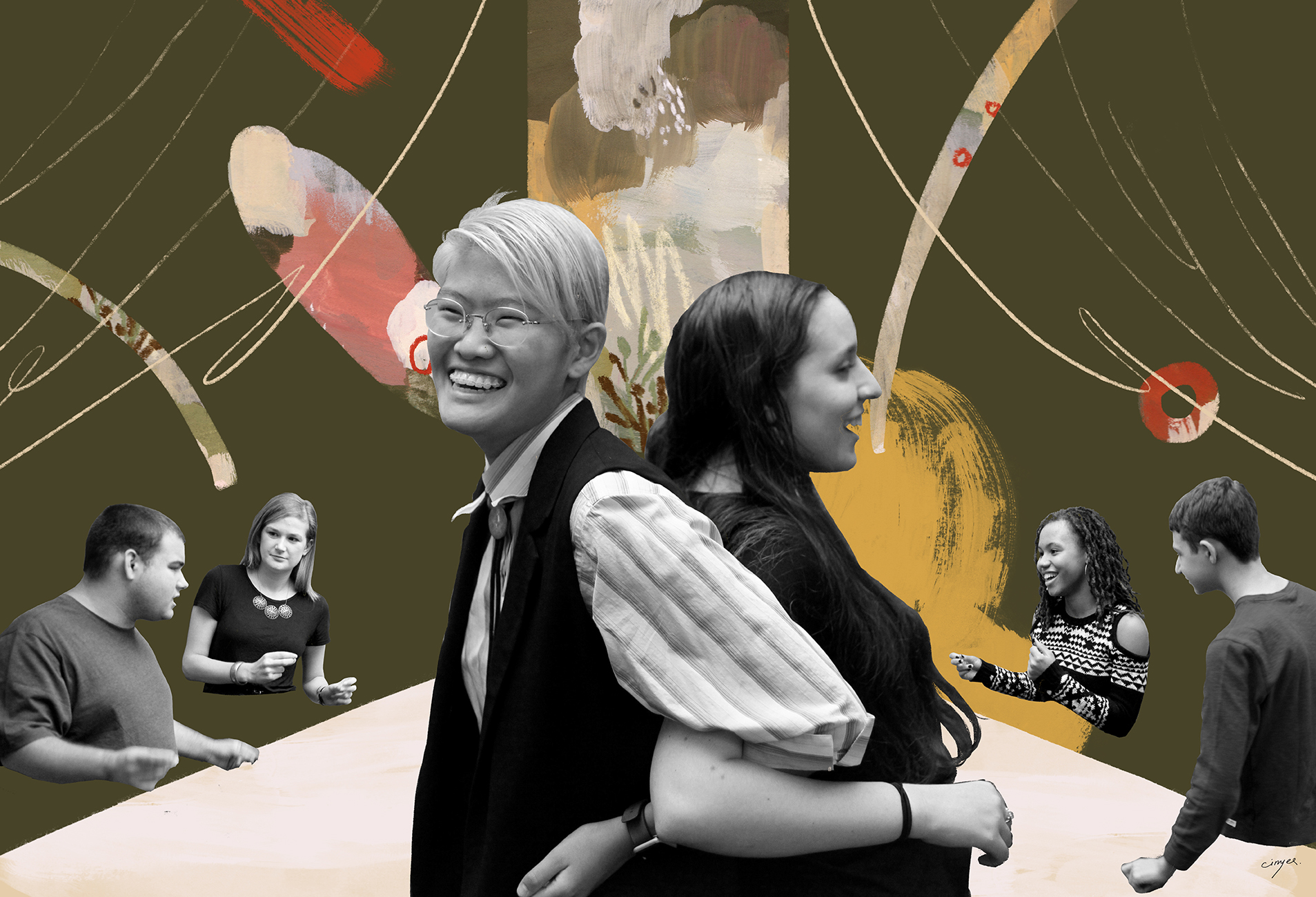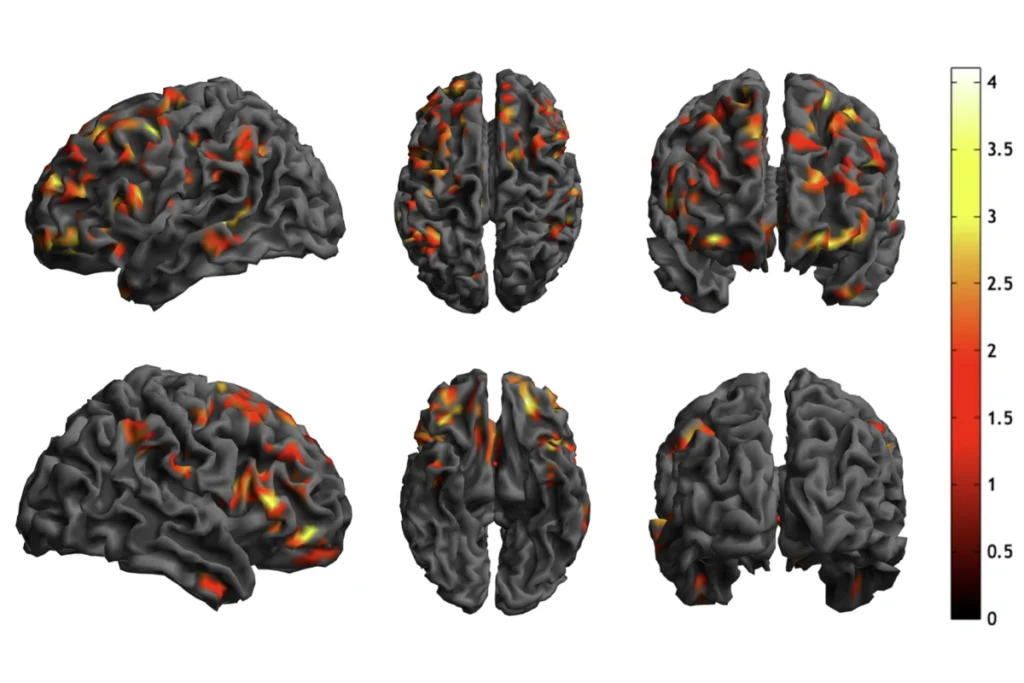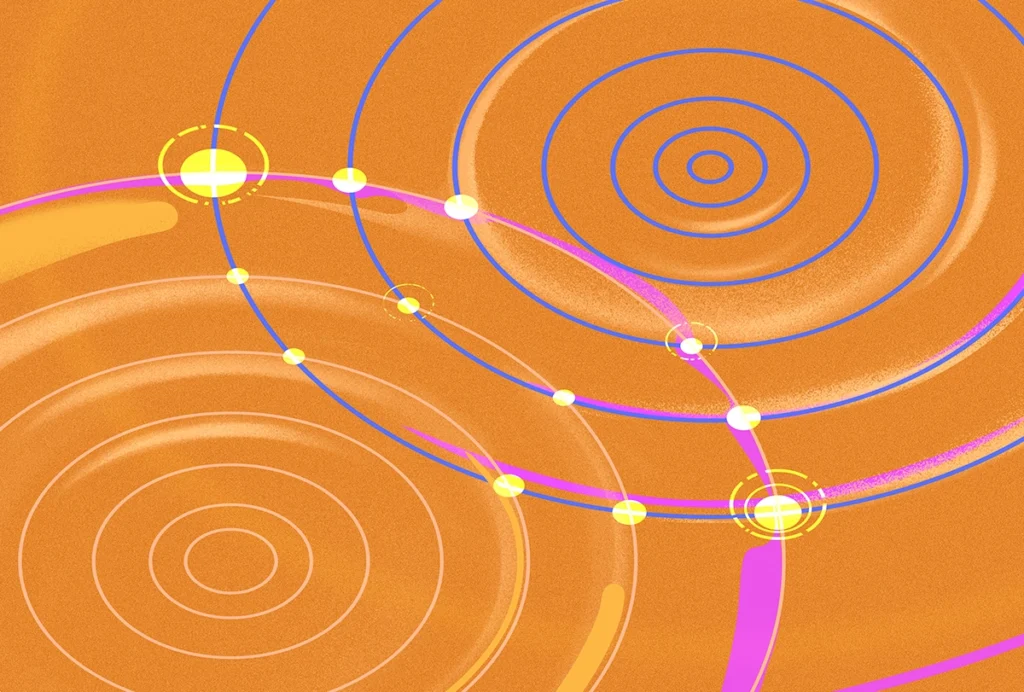I
t is lunchtime on a Sunday in January. At a long table inside a delicatessen in midtown Manhattan, a group of young people sit together over sandwiches and salads. Most of them have their phones out. One boy wears headphones around his neck. But there is less conversation than you might expect from a typical group of friends: One of the boys seems to talk only to himself, and a girl looks anxious and occasionally flaps her hands.The young people in this group are all on the spectrum. They met through a program organized by the nonprofit Actionplay, in which young people with autism or other disabilities work together to write and stage a musical. Each Sunday, the members refine characters and the script, block scenes and compose songs — and then some of them head across the street to have lunch together. “You meet other people just like you,” says Lexi Spindel, 15.
The members share a group text in which they call themselves the Wrecking Crew. A few months ago, six of the girls went to see the movie “Frozen II” together. And Lexi and Actionplay veteran Adelaide DeSole, 21, spent a long afternoon at the Spindels’ apartment over the holiday season. The two young women played games and watched “SpongeBob SquarePants” and “Kung Fu Panda” on television. “That was the first time my daughter had a friend over,” says Lexi’s father, Jay Spindel. “That never happened before Actionplay.”
From the very first recorded cases of autism, scientists have recognized that a lack of social interaction is a central part of the condition. In his 1943 paper, Leo Kanner described one autistic girl who moved among other children “like a strange being, as one moves between the pieces of furniture.” He interpreted the behavior of autistic children as being governed by “the powerful desire for aloneness and sameness.” For decades after, scientists and clinicians supposed that people with autism do not have friends and are not interested in forging friendships. “Until recently, there was an assumption that we would have found that the number [of friends] was zero,” says Matthew Lerner, a psychologist at Stony Brook University in New York.
A new line of research is forcing a rethink of those long-held beliefs. Autistic people overwhelmingly report that they want friends. And they have shown that they can and do form friendships with both neurotypical and autistic peers, even if their interactions sometimes look different from those among neurotypical people. This reframed view of friendship aims to acknowledge and encourage a better understanding of the social lives of autistic people. It recognizes the challenges autistic people face in creating close relationships, including difficulties in processing social information and dealing with conflict. “Nothing is impossible in terms of friendships for people with autism,” Lerner says, “but it does perhaps take a different route.”
Social connection is a powerful predictor of long-term physical and mental health. Having meaningful friendships — or lacking them — has an impact on our cardiovascular and immune systems, stress responses, sleep and cognitive health. People with strong social connections survive longer, on average, than those with poor connections, according to a meta-analysis of more than 300,000 people. Loneliness, defined as a mismatch between desired and actual levels of social connection, is as great a risk factor for mortality as smoking, the analysis suggests. Autistic people may not look lonely, because they often separate themselves from others — but they can feel lonely.
In fact, autistic children tend to be lonelier than their neurotypical peers, according to a study published in 2000. And this loneliness may contribute significantly to the high incidence of depression and anxiety among autistic adults. Having more and better friendships may ease the loneliness, but there is a caveat: The friendships might be distinct from those among neurotypical people.
“The benefits probably come from autistic people finding and being supported to find the relationships that work for them,” says psychologist Felicity Sedgewick of the University of Bristol in the United Kingdom. “I don’t think putting a neurotypical standard of friendship as the standard that autistic people should be made to achieve would do anything positive at all and would probably be very negative.”








